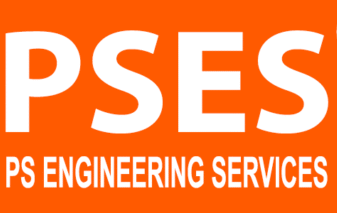A geotechnical survey is one of the most important steps in the planning and execution of any construction or infrastructure project. It provides critical information about the soil, rock, groundwater, and other subsurface conditions that directly affect the safety, stability, and success of a project. Whether it is the construction of a residential building, highway, bridge, dam, or industrial plant, geotechnical surveys ensure that engineers and developers make informed decisions.
This article explains what geotechnical surveys are, why they are important, the methods used, and their benefits in civil engineering, construction, and land development.

What is a Geotechnical Survey?
A geotechnical survey (also known as geotechnical investigation or soil investigation) is the process of collecting and analyzing data about the physical and mechanical properties of soil and rock beneath the ground surface. It involves site inspections, laboratory tests, and fieldwork to evaluate how the ground will interact with the structures built upon it.
The information obtained from a geotechnical survey helps engineers design safe and cost-effective foundations, retaining structures, earthworks, and pavements.
Objectives of a Geotechnical Survey
The primary goals of conducting a geotechnical survey include:
Determining Soil Properties – Identifying soil type, bearing capacity, density, permeability, shear strength, and compressibility.
Assessing Rock Characteristics – Evaluating rock layers, fractures, and stability for construction on rocky terrains.
Groundwater Analysis – Studying water levels, flow direction, and seasonal variations.
Foundation Design Data – Providing engineers with the information needed to design safe foundations.
Identifying Hazards – Recognizing risks such as soil erosion, landslides, liquefaction, or settlement.
Ensuring Safety & Compliance – Meeting regulatory requirements and avoiding structural failures.
Importance of Geotechnical Surveys
A geotechnical survey is essential because the ground conditions directly influence the design and long-term stability of any structure. Without proper soil and ground analysis, even the strongest buildings can fail. Some key reasons why are important:
Safety: Prevents accidents, collapses, and costly damages.
Cost-effectiveness: Minimizes unnecessary construction costs by avoiding over-designed foundations.
Risk Management: Identifies potential geohazards like landslides, earthquakes, or flooding.
Project Planning: Ensures smooth project execution by predicting ground behavior.
Legal Compliance: Many government authorities require geotechnical reports before approving major projects.
Methods of Geotechnical Survey
Different methods are used depending on the type of project, soil conditions, and depth of investigation required.
Desk Study & Site Inspection
Collecting background data, geological maps, and aerial images.
Visiting the site to observe soil conditions, drainage, vegetation, and terrain.
Borehole Drilling & Sampling
Drilling boreholes to collect soil and rock samples.
Samples are sent to laboratories for classification and strength testing.
Standard Penetration Test (SPT)
A widely used test to determine soil resistance and strength.
Helps in evaluating bearing capacity for foundations.
Cone Penetration Test (CPT)
A cone is pushed into the soil to measure resistance.
Provides continuous soil profile data.
Geophysical Methods
Non-invasive techniques like seismic refraction, ground-penetrating radar (GPR), and electrical resistivity.
Useful for large-scale surveys and detecting underground anomalies.
Trial Pits and Test Trenches
Excavated manually or mechanically to study shallow soil conditions.
Groundwater Monitoring
Observation wells installed to study water table levels and seasonal variations.
Laboratory Testing in Geotechnical Surveys
Collected soil and rock samples undergo laboratory tests to determine:
Grain size distribution
Atterberg limits (plasticity characteristics)
Shear strength (direct shear test, triaxial test)
Consolidation and compaction characteristics
Permeability (water flow rate through soil)
Rock hardness and durability
Applications of Geotechnical Surveys
Geotechnical surveys play a vital role in multiple industries:
Construction – Buildings, skyscrapers, housing projects, industrial plants.
Transportation Infrastructure – Roads, highways, railways, tunnels, and airports.
Bridges & Dams – Ensuring stability against heavy loads and water pressure.
Mining & Quarrying – Evaluating rock stability and excavation safety.
Oil & Gas Projects – Offshore and onshore drilling platforms.
Urban Planning – Land development, smart cities, and zoning regulations.
Environmental Projects – Waste management sites, landfills, and flood control.
Benefits of Conducting a Geotechnical Survey
Reduces Construction Risks – Prevents foundation failures.
Optimizes Design – Helps engineers choose the best foundation type (shallow, deep, pile).
Saves Time & Money – Avoids unexpected ground problems during construction.
Enhances Durability – Ensures long-term stability of infrastructure.
Supports Sustainability – Encourages eco-friendly and resource-efficient construction.
Challenges in Geotechnical Surveys
While geotechnical surveys are essential, they also face challenges:
High Costs – Advanced testing and equipment can be expensive.
Time-Consuming – Detailed surveys require weeks to months.
Variable Soil Conditions – Soil properties can change within short distances.
Weather Dependence – Heavy rains, floods, or extreme heat may delay fieldwork.
Future of Geotechnical Surveys
With the rise of technology, geotechnical investigations are becoming faster, more accurate, and cost-efficient. Innovations include:
Remote Sensing & Drones – Capturing 3D terrain models.
Artificial Intelligence (AI) – Predicting soil behavior from past data.
Smart Sensors – Real-time monitoring of soil settlement and vibration.
BIM Integration – Linking geotechnical data with Building Information Modeling for better project planning.
Conclusion
A geotechnical survey is the foundation of every successful construction project. By analyzing soil, rock, and groundwater conditions, engineers gain valuable insights into the best ways to design and build safe, stable, and long-lasting structures. Whether it is a small residential project or a large infrastructure development, reduce risks, save money, and ensure compliance with safety standards.
Investing in a professional geotechnical survey is not just a requirement but a smart decision that guarantees the sustainability and success of any project.
